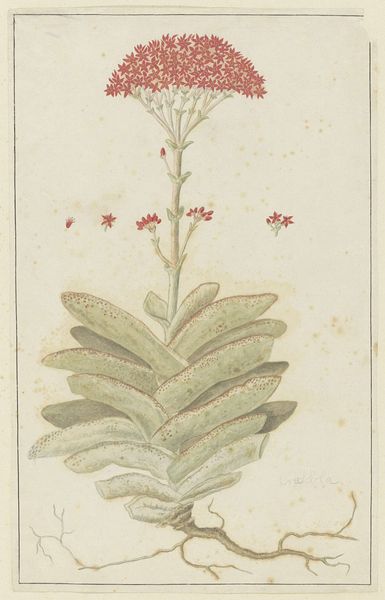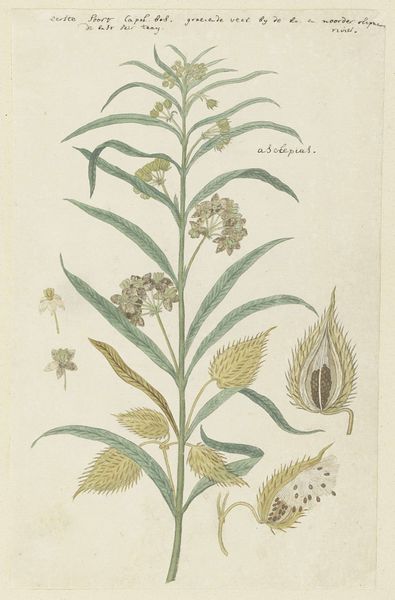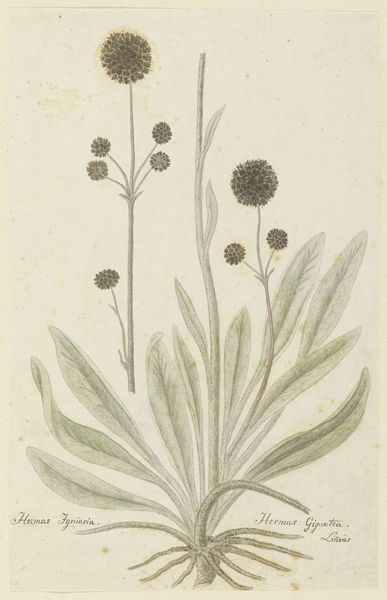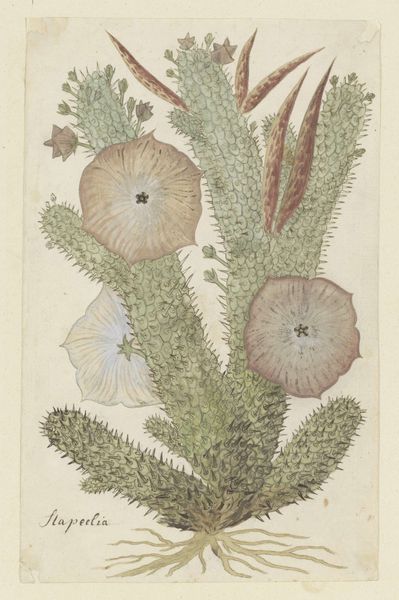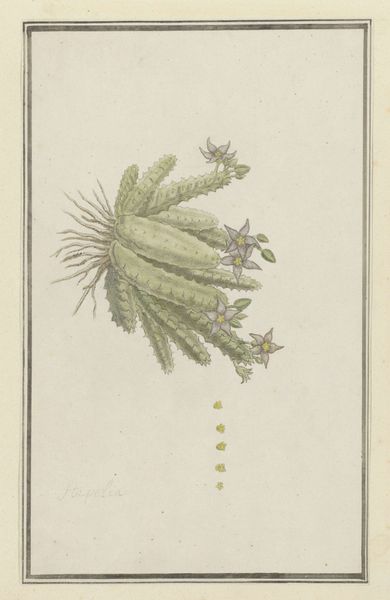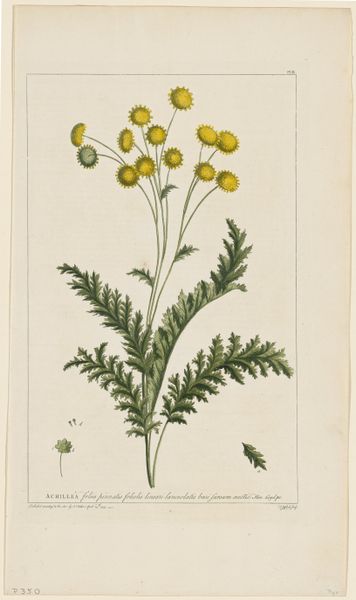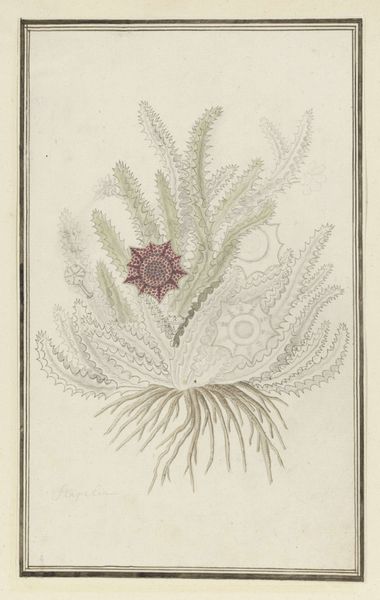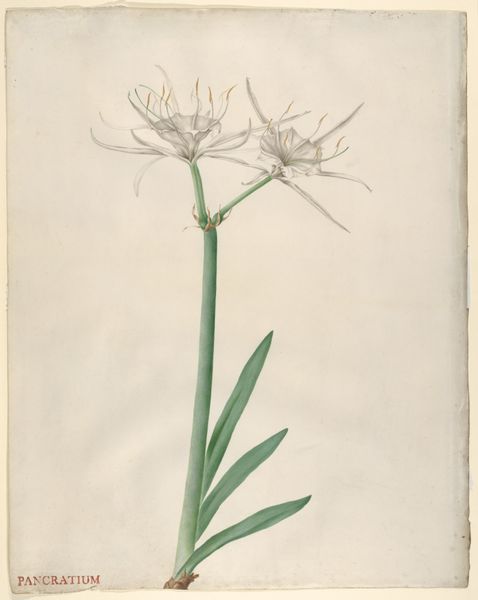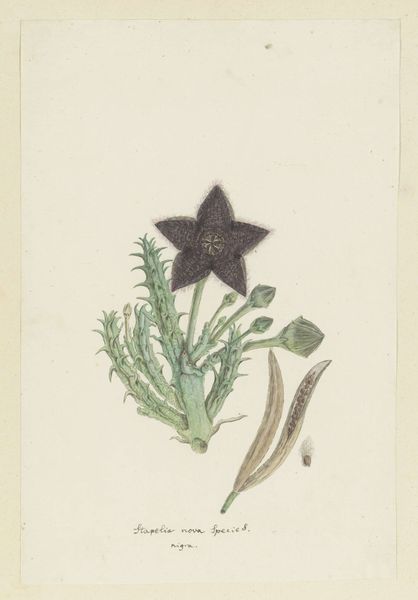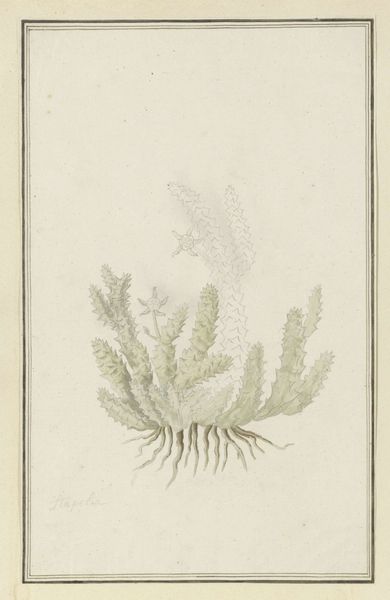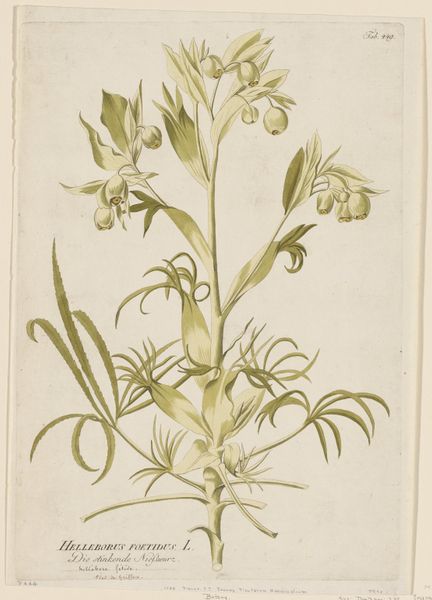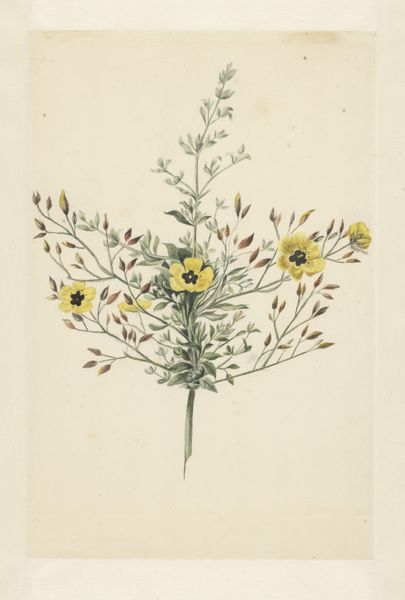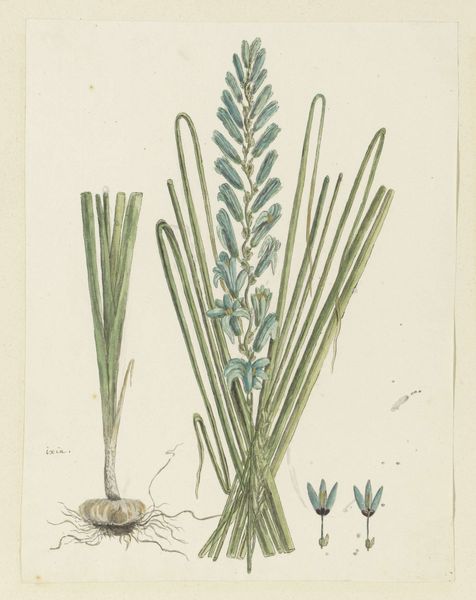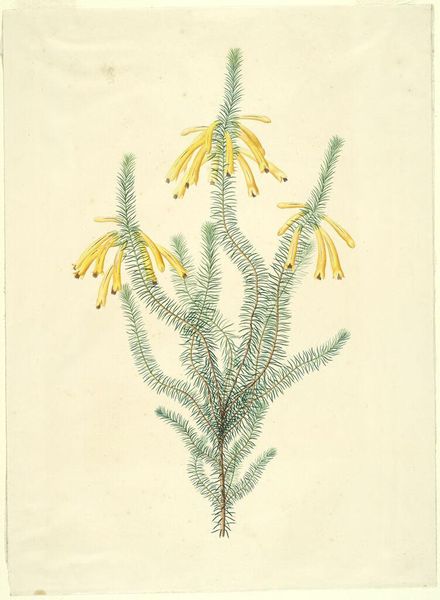
drawing, paper, watercolor
#
drawing
#
paper
#
watercolor
#
watercolour illustration
#
naturalism
#
watercolor
Dimensions: height 660 mm, width 480 mm, height 412 mm, width 252 mm, height 398 mm, width 239 mm
Copyright: Rijks Museum: Open Domain
Curator: Up next we have a delicate watercolour illustration by Robert Jacob Gordon. It's titled "Tridentea pedunculata (Masson) L.C. Leach (Stapelia)," and thought to have been produced between 1777 and 1786. Editor: I’m immediately struck by its… stillness. The composition, so precisely rendered, almost feels like a scientific specimen pinned to a board. A botanist's meticulous record. Curator: Indeed, the artwork adheres to the naturalist style prevalent during the Enlightenment. Gordon's use of watercolor on paper allows for a delicate depiction of the plant's form. Note how the botanical structures are detailed precisely, as if for identification purposes. Editor: Yes, observe the arrangement; how the composition guides your eye from the radiating roots, upwards to the cluster of leaves and the star-shaped flowers above. There's a pleasing visual rhythm here. Curator: This brings us to the cultural and historical context. Gordon, as a military officer and explorer for the Dutch East India Company, contributed to natural history by documenting his botanical finds. Images like these aided scientific understanding within colonial enterprises. Editor: But did it extend beyond that? Surely these naturalistic studies fulfilled aesthetic roles, too? How does Gordon’s technique, his very careful depiction of light and shade, emphasize an emotional or affective connection between viewer and nature? It has presence. Curator: I appreciate the perspective of someone so keenly attentive to aesthetics. The soft coloring, a testament to watercolor’s particular qualities, softens what might be considered a clinical approach. Editor: Precisely, the watercolor almost breathes life back into the otherwise very controlled, ordered drawing. Curator: These tensions highlight the complexities of art made during this time. A blend of science, exploration, colonialism and an evolving sensibility to the aesthetics of the natural world. Editor: I will certainly look differently at similar art after taking on these notions of precision, life, colonialism and botanical science. Thank you for this instructive discussion.
Comments
No comments
Be the first to comment and join the conversation on the ultimate creative platform.
